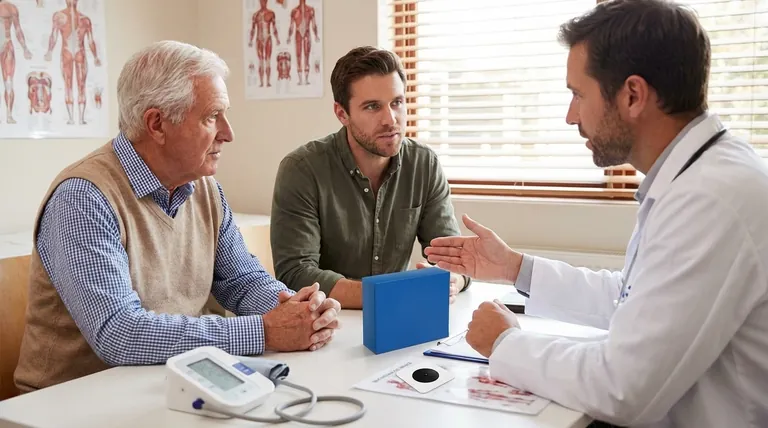The Testosterone Transdermal Patch requires special considerations for pediatric and geriatric populations due to differing physiological risks. For children, safety and efficacy remain unestablished, while elderly patients face heightened prostate-related risks. Key precautions include strict medical supervision, avoiding contact with pregnant women, and monitoring for cardiovascular or metabolic side effects. Application protocols must be carefully followed to minimize skin irritation and ensure proper dosing. Underlying conditions like diabetes, heart disease, or cancer history may necessitate alternative treatments. Both age groups require tailored risk-benefit evaluations before use.

Key Points Explained:
Pediatric Population Considerations
-
Unestablished Safety Profile:
- No clinical studies confirm safe use in children
- Potential for premature puberty or growth plate disturbances
- Alternative delivery methods may be considered for pediatric hormone deficiencies
-
Absolute Contraindications:
- Must avoid use in children without documented testosterone deficiency
- Pregnancy risk requires education about patch handling for caregivers
Geriatric Population Risks
-
Prostate Complications:
- Mandatory baseline and periodic PSA screenings
- Digital rectal exams recommended every 6-12 months
- Immediate discontinuation if urinary symptoms develop
-
Cardiovascular Monitoring:
- Increased hematocrit requires regular blood tests
- Blood pressure checks at each medical visit
- Lipid profile monitoring every 3-6 months
Universal Precautions
-
Application Protocol:
- Rotate sites among back, abdomen, arms, or thighs
- 7-day rest period for each application area
- 3-hour water exposure delay post-application
-
Diagnostic Interference:
- Remove patch 24 hours before MRI scans
- Inform radiologists about patch use history
-
Comorbidity Considerations:
- Requires dose adjustment for liver/kidney impairment
- Sleep apnea screening recommended for obese patients
- Increased diabetes monitoring due to potential glucose impact
-
Behavioral Monitoring:
- Watch for mood swings or aggression
- Assess for signs of dependency in addiction-prone patients
-
Contraindication Awareness:
- Absolute avoidance in active prostate/breast cancers
- Caution with history of thromboembolic disorders
These precautions highlight why testosterone patches require individualized prescribing, particularly for vulnerable age groups where physiological changes amplify certain risks. Regular interdisciplinary care coordination optimizes safety monitoring.
Summary Table:
| Population | Key Precautions | Monitoring Requirements |
|---|---|---|
| Pediatric | Safety unestablished, avoid without deficiency | Growth monitoring, caregiver education |
| Geriatric | Prostate/cardiovascular risks | PSA screenings, blood pressure, lipid tests |
| Universal | Skin rotation, comorbidity adjustments | Behavioral/diagnostic interference checks |
Ensure safe testosterone therapy for vulnerable populations—partner with Enokon, a trusted bulk manufacturer of precision transdermal patches. Our expertise in custom R&D ensures compliant formulations tailored to your patients' needs. Contact our specialists today for reliable solutions in hormone delivery.
Visual Guide

Related Products
- Prostate Pain Kidney Health Care Patch for Men
- Far Infrared Heat Pain Relief Patches Transdermal Patches
- Medical Cooling Gel Patches for Fever Cooling Patches
- Menthol Gel Pain Relief Patch
- Icy Hot Menthol Medicine Pain Relief Patch
People Also Ask
- What should be done in case of a testosterone patch overdose? A Step-by-Step Emergency Guide
- What should patients tell their doctor before using testosterone patches? A Guide to Safe Treatment
- What precautions should be taken when applying testosterone patches? Maximize Safety and Effectiveness
- What is the purpose of testosterone patches? A Steady Solution for Low Testosterone
- What should be done if a dose of testosterone patches is missed? Regain Stability and Safety














